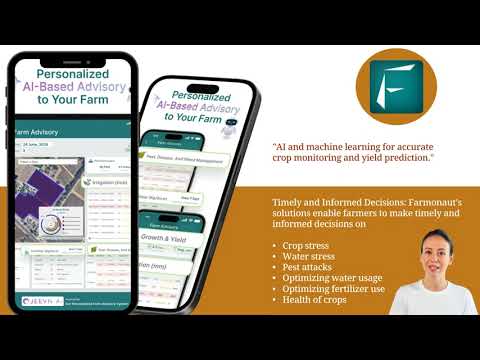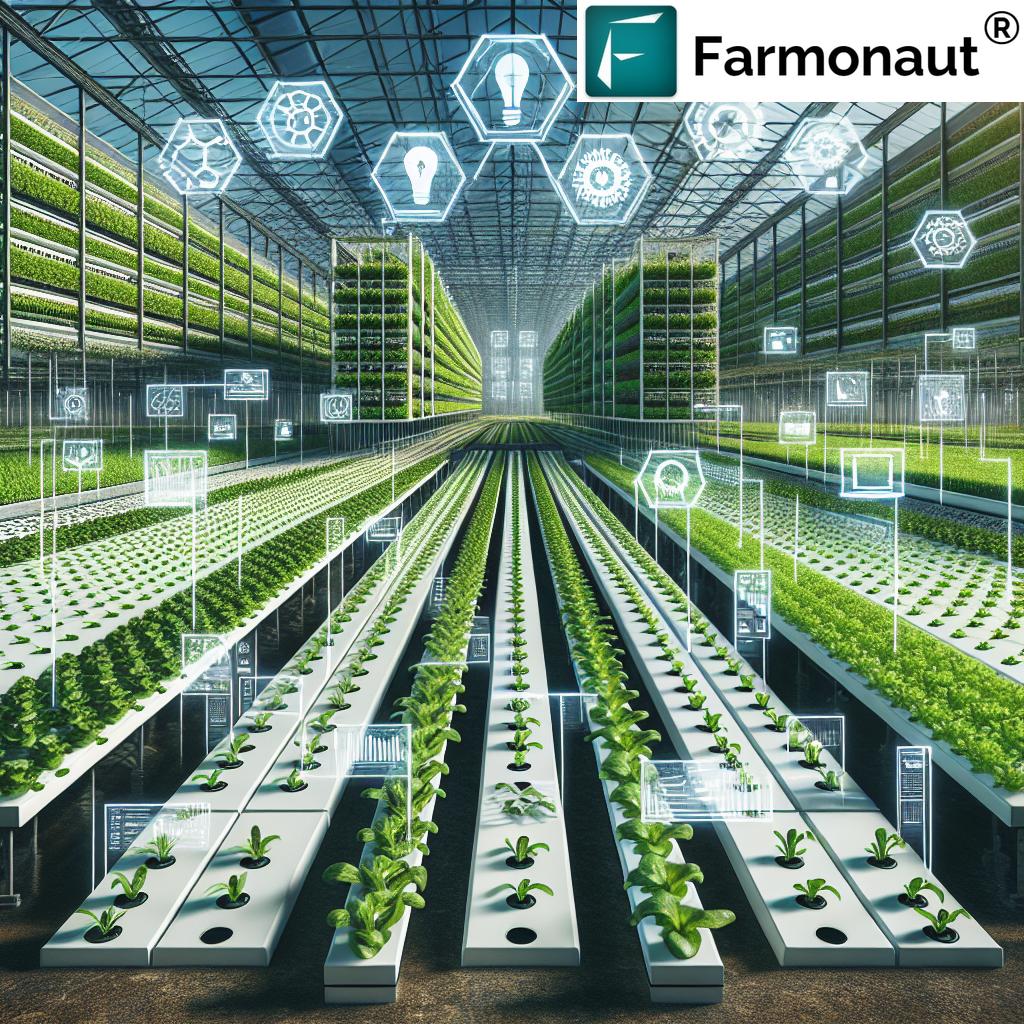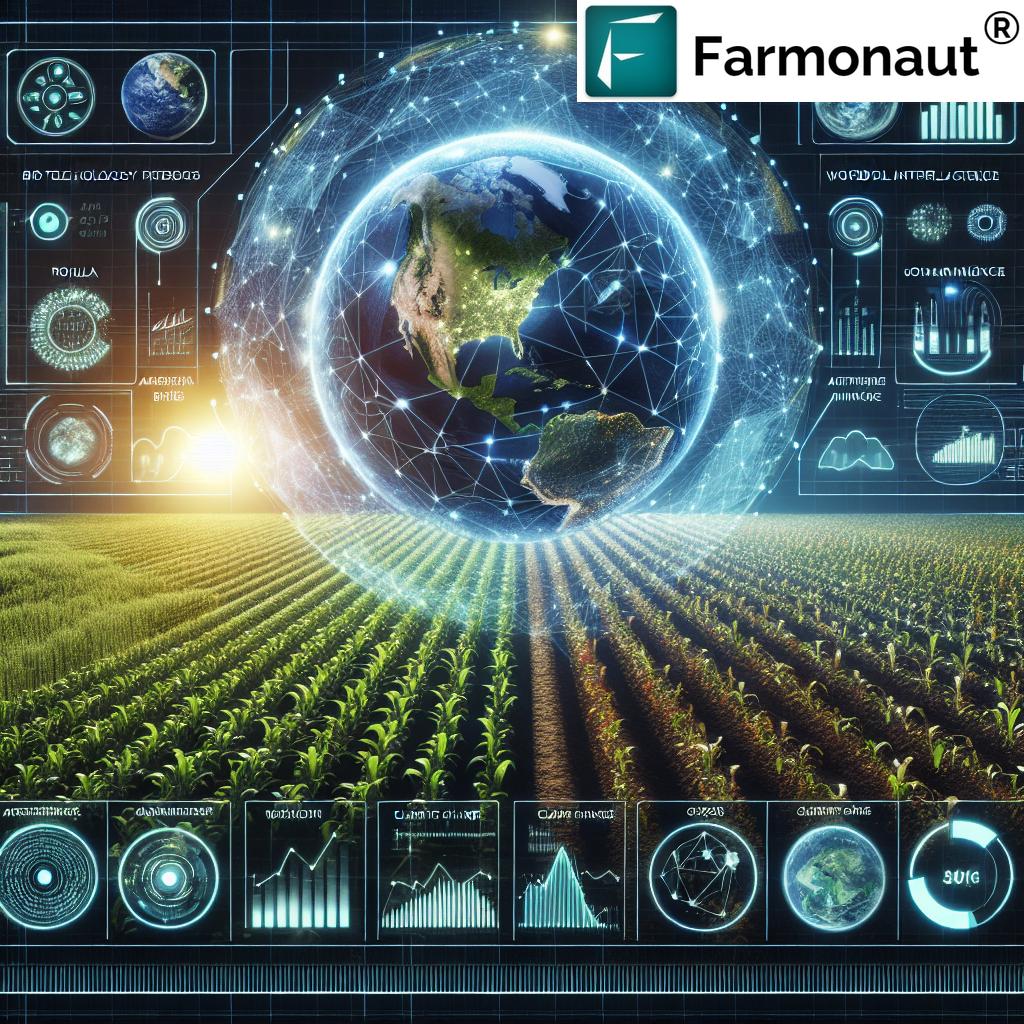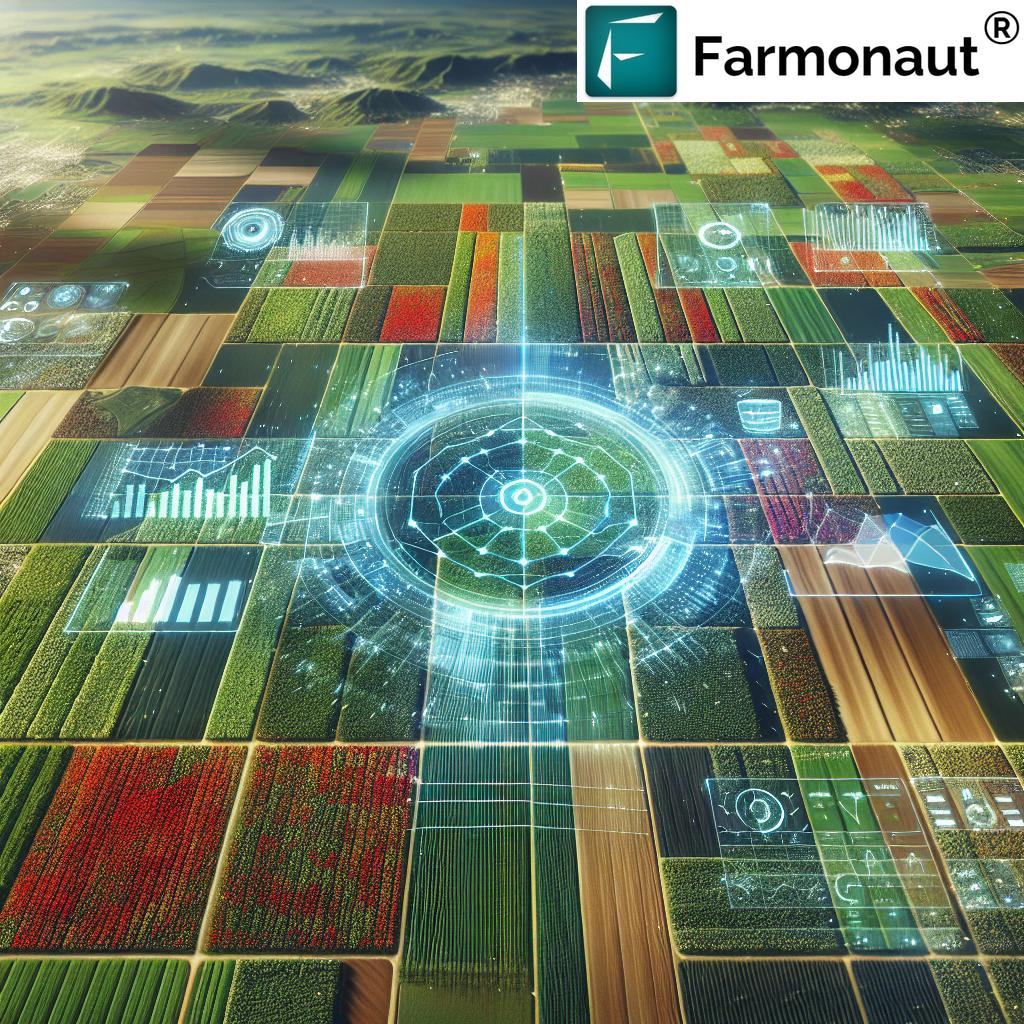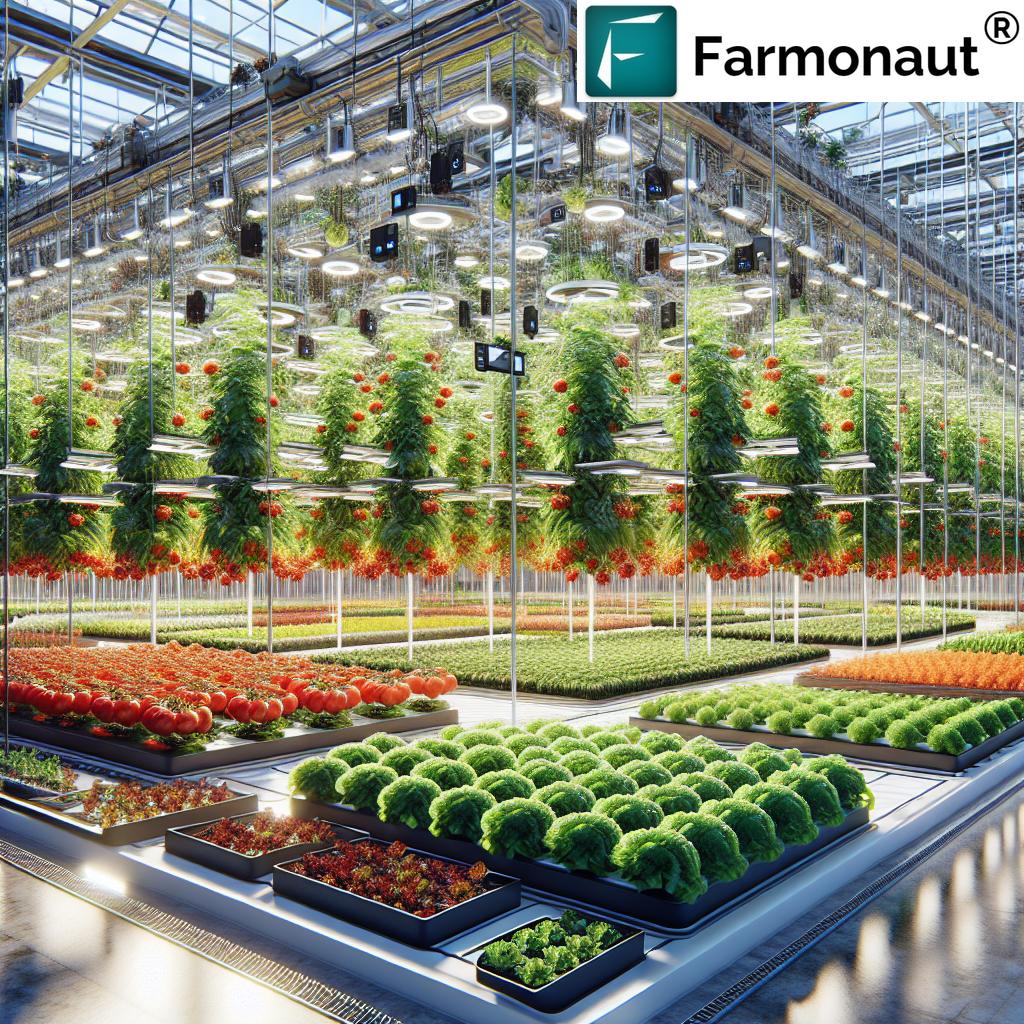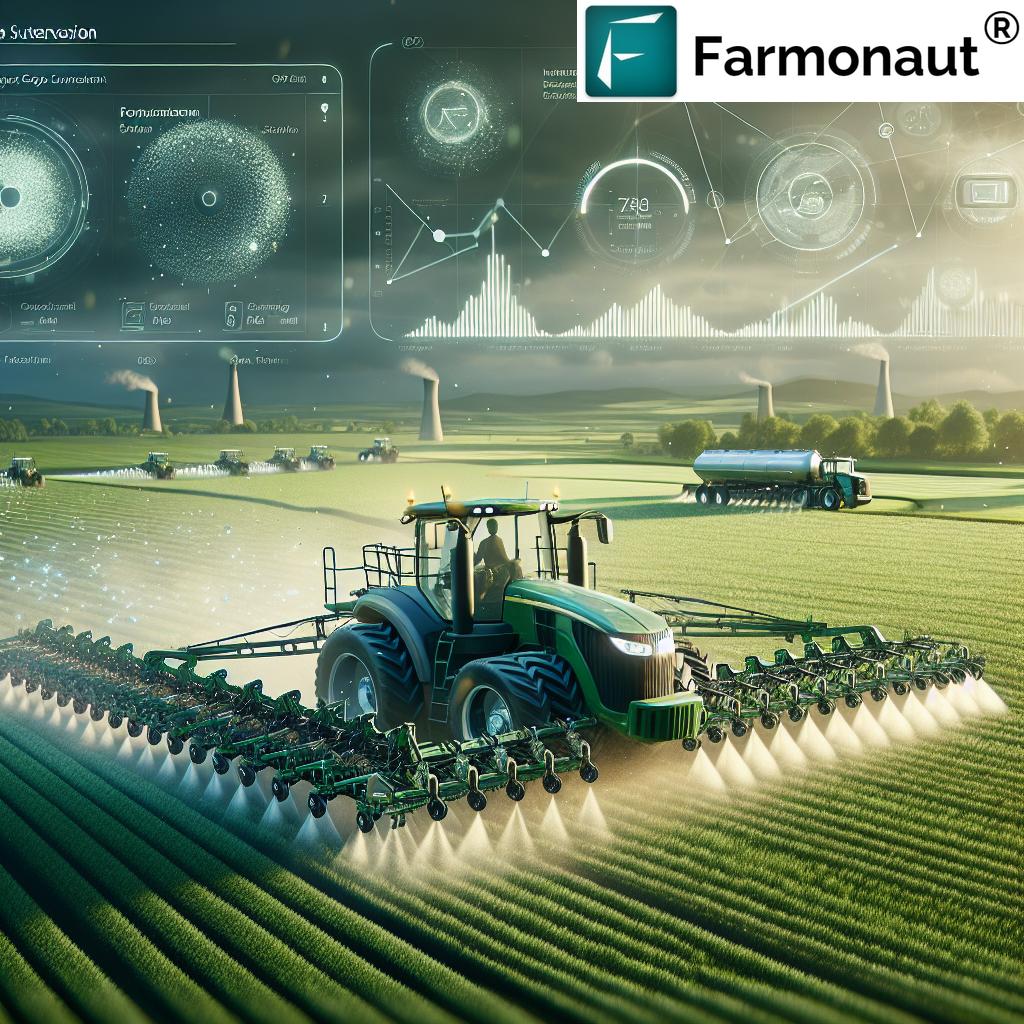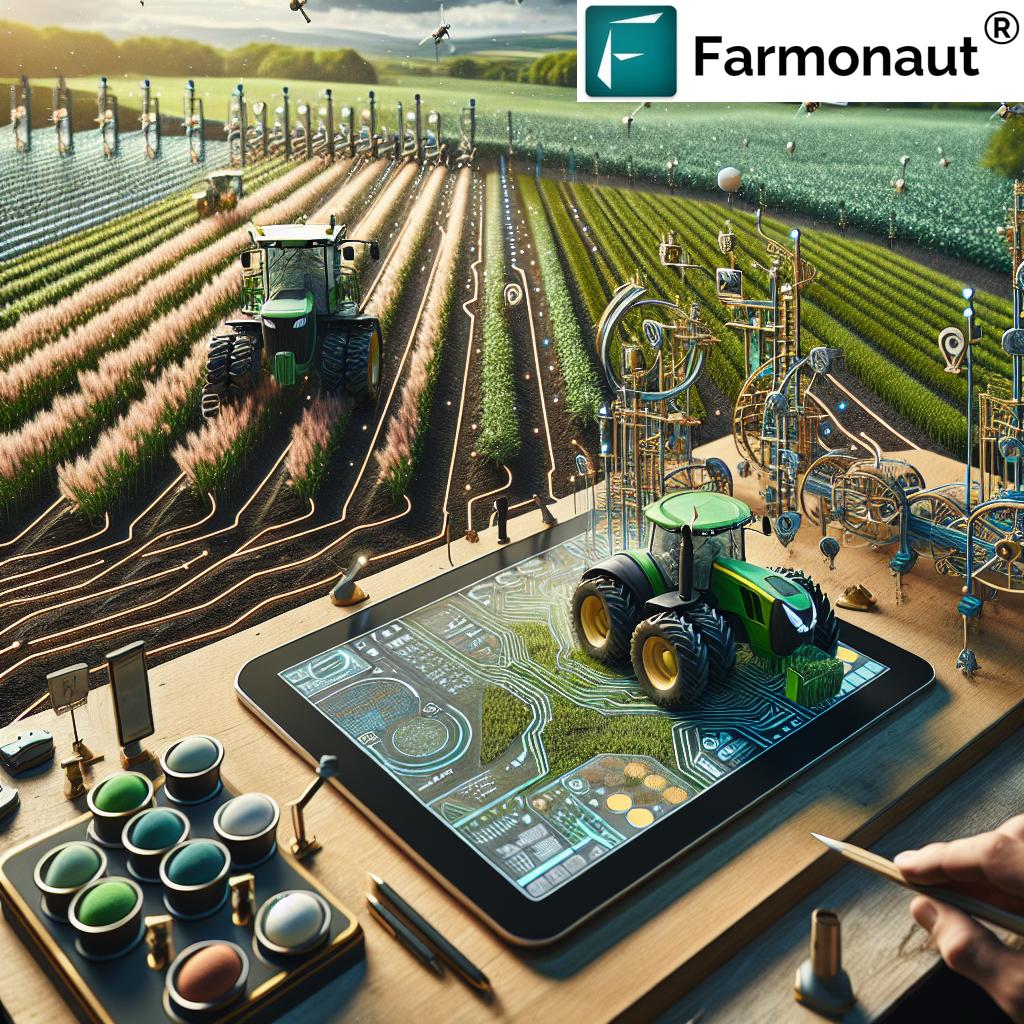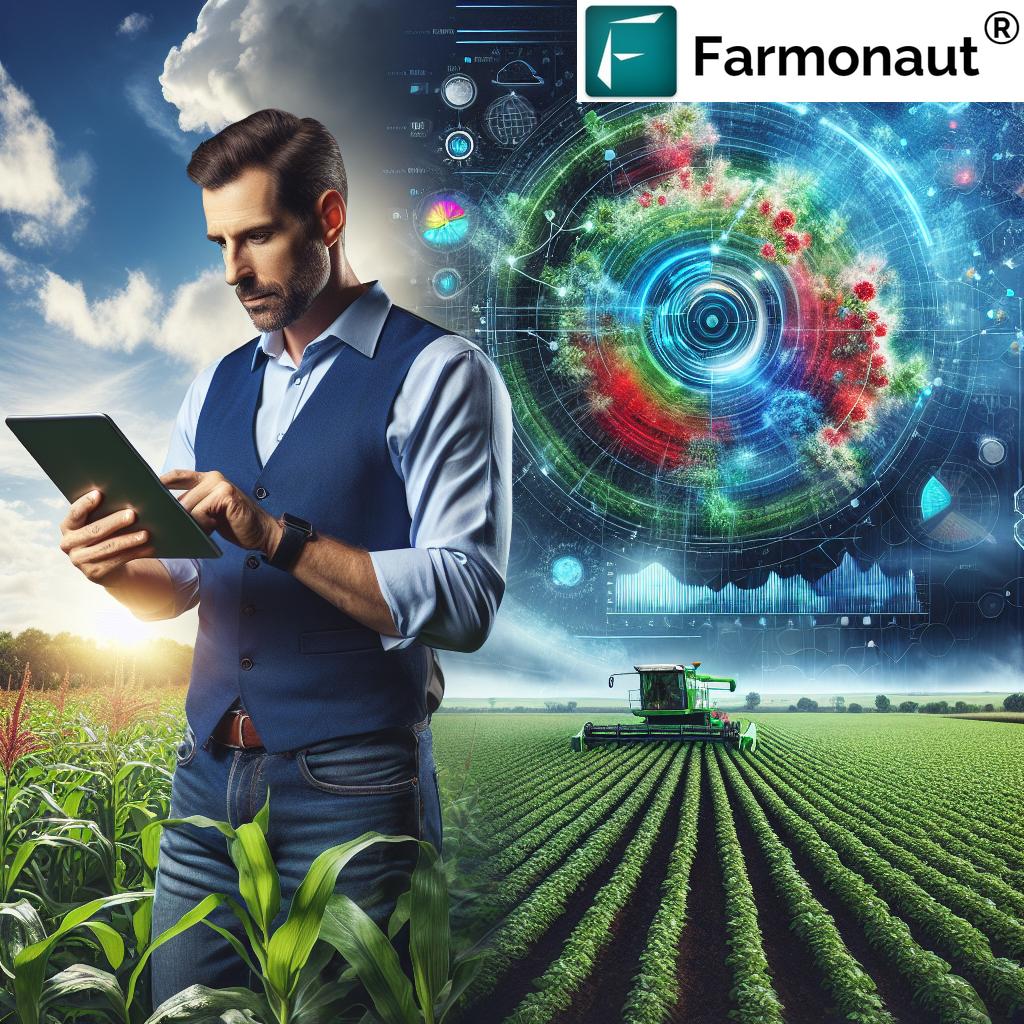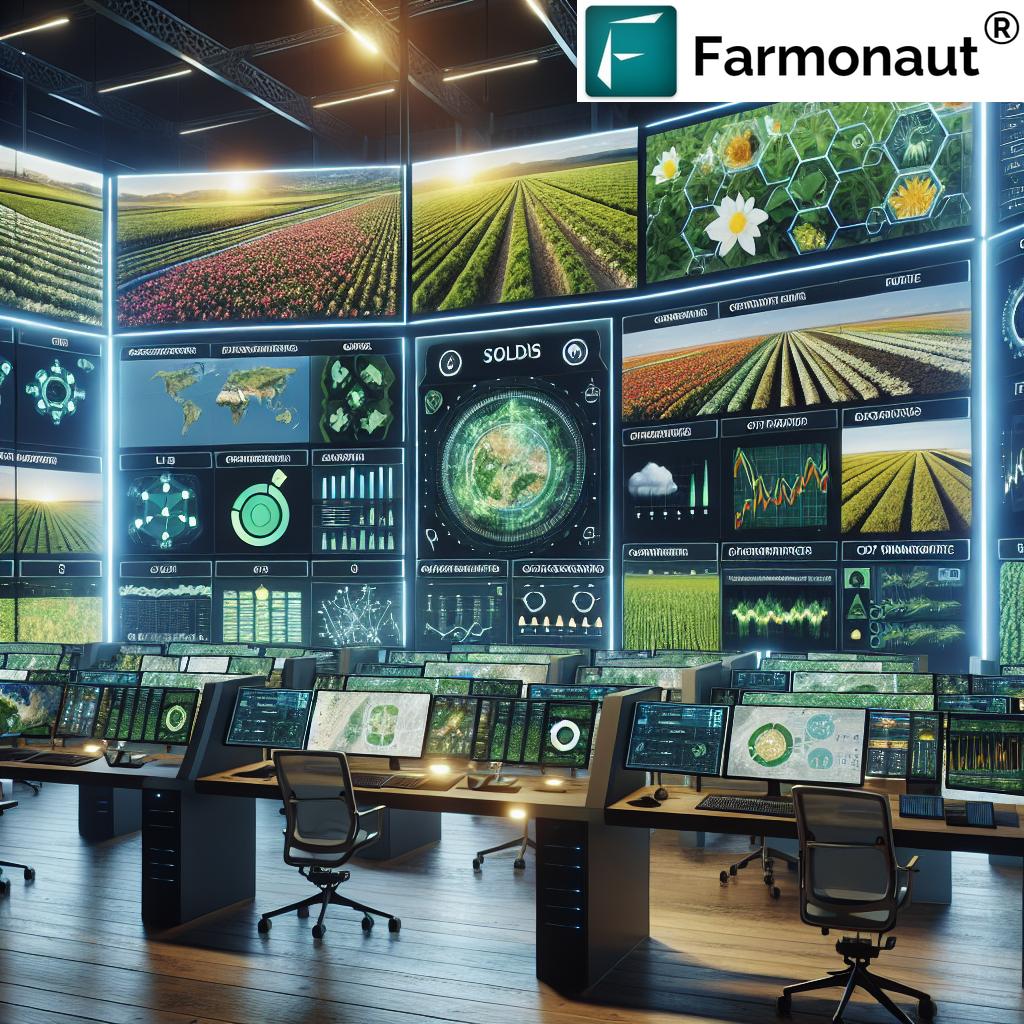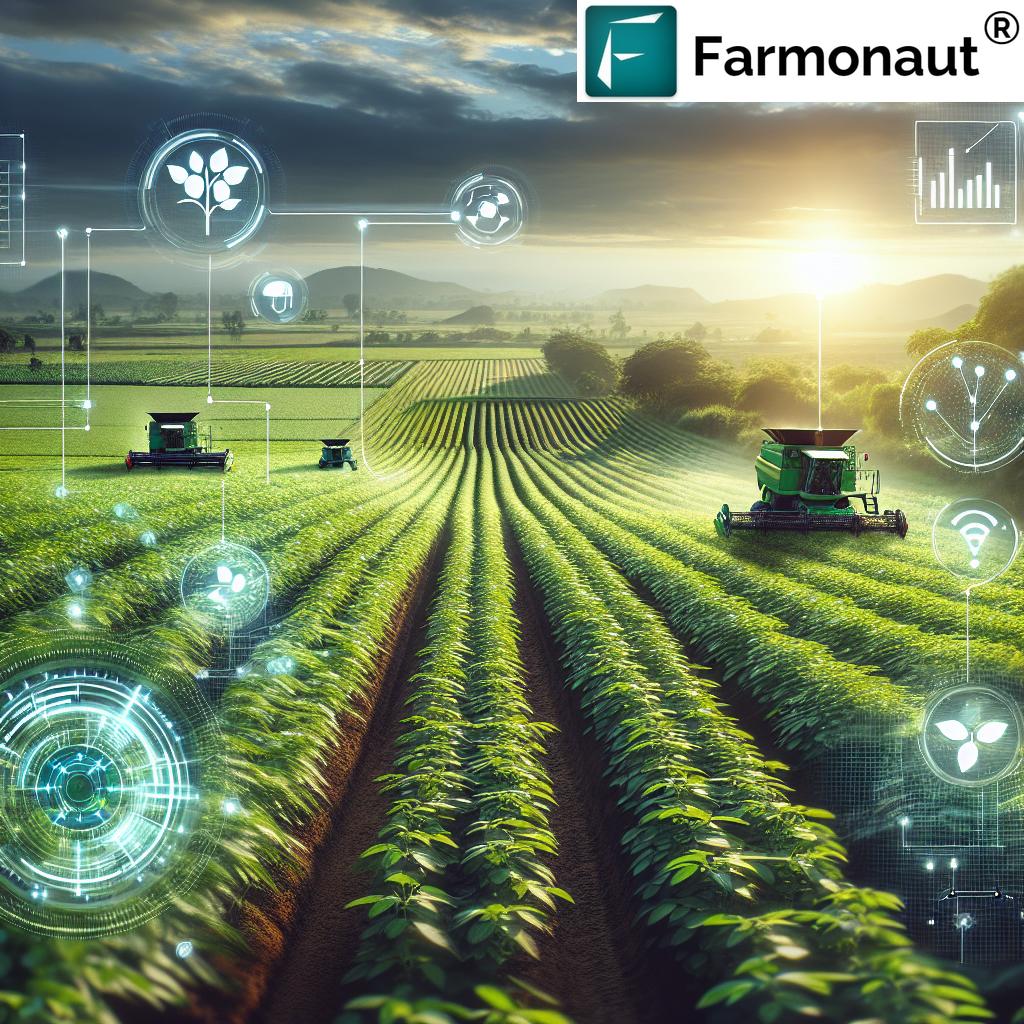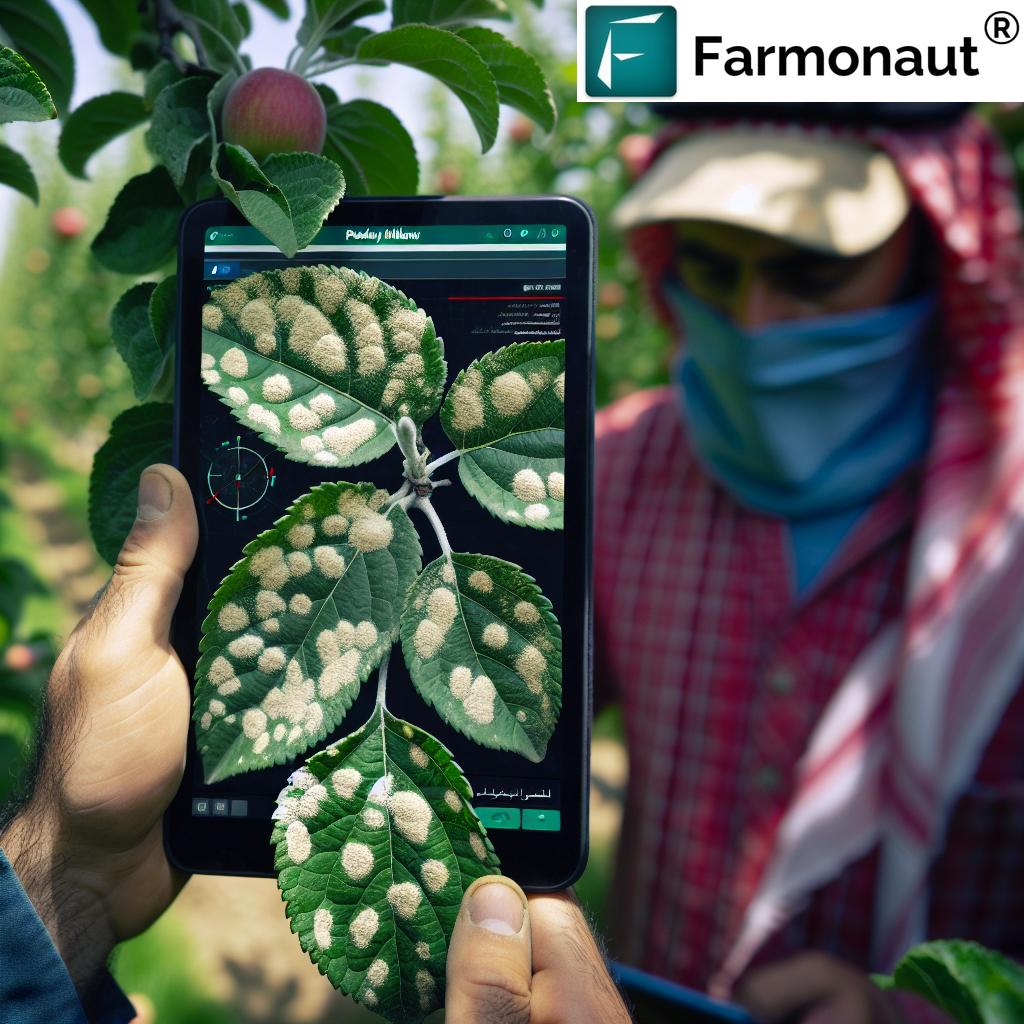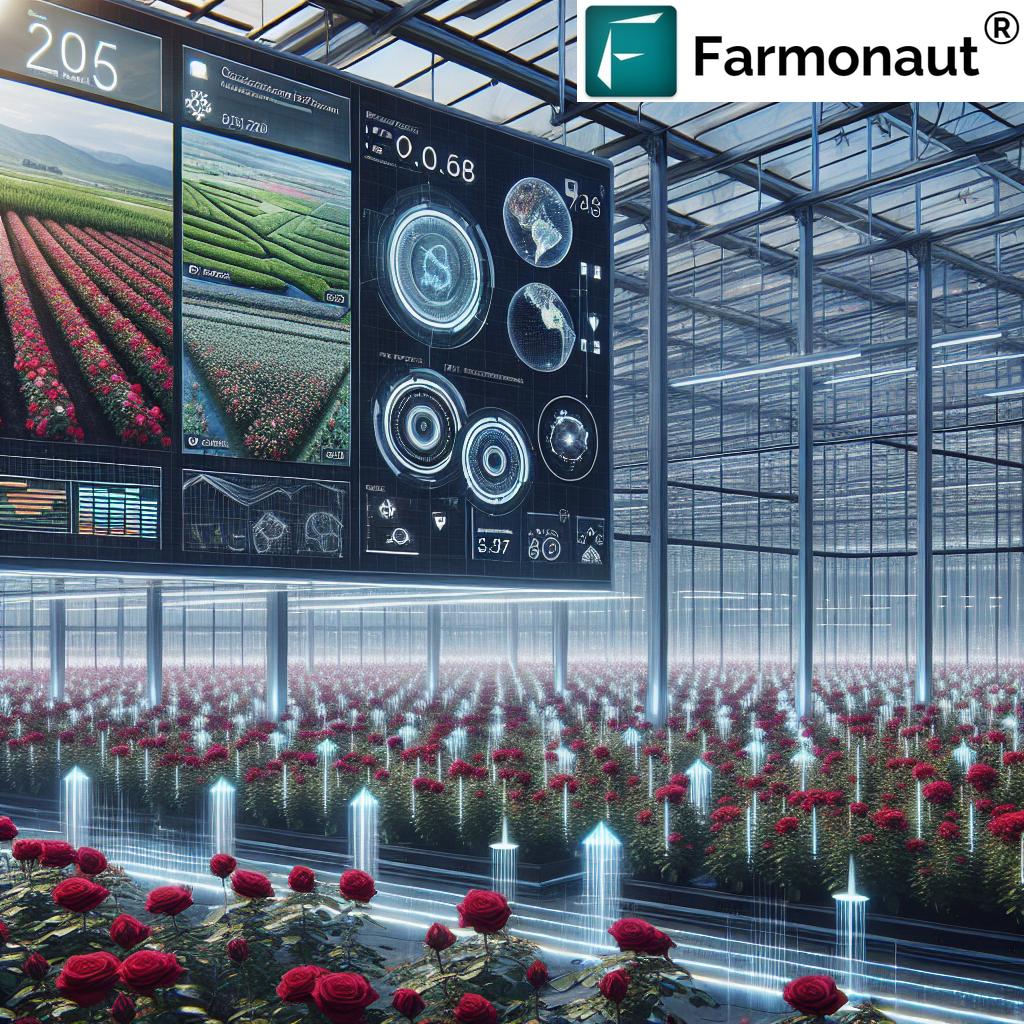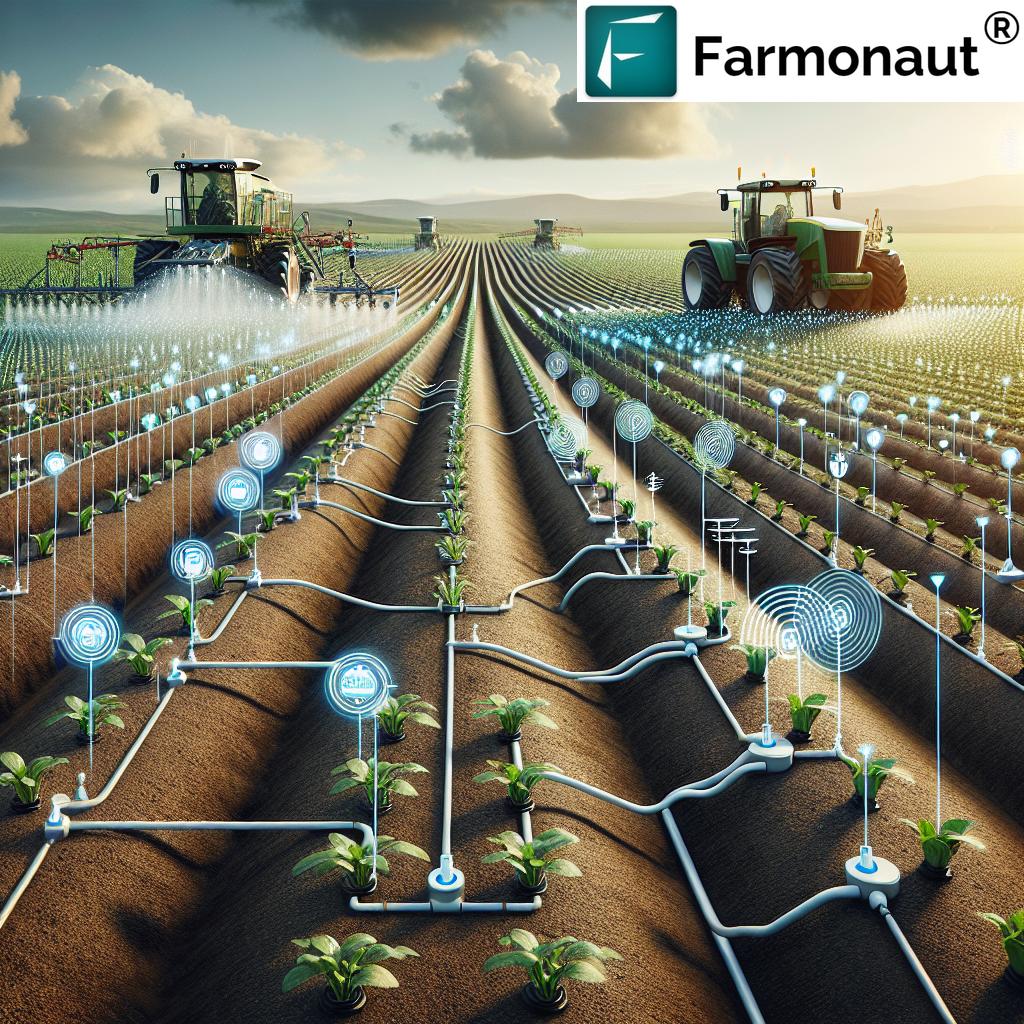Farming Solutions: 10 Top Technologies for Yields
Table of Contents
- Introduction: The Farming Revolution
- Trivia: Precision Agriculture Yields
- 1. Precision Agriculture
- 2. Autonomous Technology
- 3. Vertical Farming Systems
- 4. Hydroponics and Aquaponics
- 5. Conservation Agriculture
- 6. Agroforestry
- 7. Renewable Energy in Farming
- 8. Blockchain in Agriculture
- 9. Artificial Intelligence (AI) & Machine Learning
- 10. Nanotechnology
- Bonus Innovations: Agrivoltaics, No-Till Farming, Smart Water Management, Biological Pest Control, Lab-Grown Meat
- Comparative Technologies Impact Table
- Farmonaut: Making Precision Agriculture Accessible
- Frequently Asked Questions (FAQ)
- Conclusion: Farming Forward
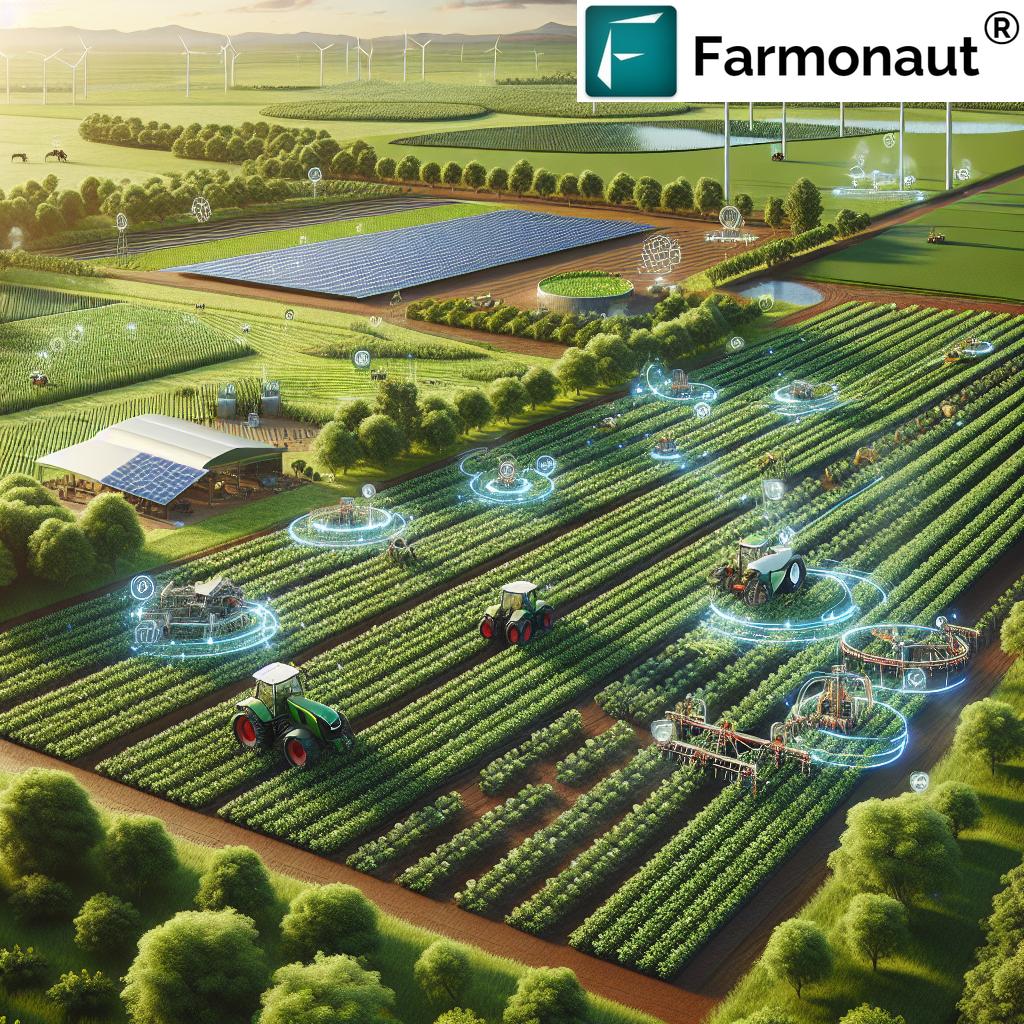
Introduction: The Farming Revolution
The agricultural sector is undergoing a transformative shift driven by the need to enhance productivity, boost resilience, and ensure sustainability. Modern agriculture faces unique challenges – from climate variability and labor shortages to limited resources and food security pressures. Fortunately, a new wave of innovative farming solutions is emerging, integrating advanced technologies, smart analytics, and sustainable farming practices. As a result, farmers worldwide are empowered to optimize yields, enhance resource efficiency, and protect our environment.
In this in-depth guide, we explore the top 10 farming technologies – including precision agriculture, autonomous machinery, vertical farming systems, hydroponics and aquaponics, and more – that are redefining how food is produced. We highlight how each approach drives efficiency and innovation, and map their role in building a more resilient and productive agricultural sector.
1. Precision Agriculture: Optimizing Yields with Data-Driven Insights
Precision agriculture stands at the forefront of farming solutions that revolutionize productivity and resource management. By integrating GPS guidance, advanced IoT sensors, and robust data analytics, farmers can monitor soil health, crop conditions, and real-time weather patterns across their fields. This data-centric approach enables precise application of water, fertilizers, and pesticides, minimizing waste and reducing the environmental impact.
Key practices within precision agriculture include:
- Automated field mapping and soil sampling for targeted nutrient delivery
- Realtime monitoring and predictive analytics using AI to detect pest outbreaks and crop stress
- Optimizing planting schedules and crop rotations by analyzing historic weather patterns and soil conditions
Platforms like Farmonaut make these innovations accessible through satellite-based precision agriculture services. They help farmers worldwide to make informed, field-level decisions and maximize their yields in a sustainable way.
Precision tools commonly used:
- NDVI (Normalized Difference Vegetation Index) for vegetation health
- Soil moisture sensors to refine irrigation schedules
- Weather forecasting systems to anticipate climate challenges
Benefits:
- Increased efficiency in resource use
- Reduced input costs via targeted applications
- Improved resilience to climatic variability
- Demonstrated yield improvements up to 20%
To explore how our satellite-based crop monitoring and AI-advisory can help optimize your farming decisions, sign up for Farmonaut now or use our accessible API to integrate data directly into your systems.
2. Autonomous Technology: Robotic Farming Equipment & Operations
Autonomous farming equipment is transforming agricultural operations and addressing persistent labor shortages. Drones, robotic tractors, and self-navigating harvesters automate tasks such as planting, spraying, harvesting, and crop monitoring. Leveraging neural networks, sensors, and advanced guidance systems, these machines execute precise operations, boosting efficiency while reducing human error.
- Autonomous seeders and planters for ultra-accurate sowing
- Drones for crop surveillance, pest inspection, and targeted pesticide application
- Driverless tractors for continuous field work with precision
Despite the benefits, initial investment and maintenance can be challenging for smallholders. Solutions like Farmonaut Fleet Management provide cloud-based logistics and operational control, ensuring total visibility and resource efficiency across machinery fleets.
Key Benefits of Autonomous Technology:
- Consistency & accuracy in repetitive tasks
- Reduced labor costs and error rates
- 24/7 operations enable rapid responses to field needs
These technologies pave the way for data-driven automation and precision farming at scale, ensuring continued growth in agricultural productivity.
3. Vertical Farming Systems: Urban, Sustainable Crop Production
Vertical farming systems employ stacked layers for plant cultivation, typically in urban or peri-urban settings. By using controlled environments such as greenhouses, and advanced hydroponics or aeroponics techniques, vertical farming can:
- Increase land productivity by maximizing use of space
- Enable year-round food production regardless of external weather patterns
- Reduce water and energy use compared to conventional field farming
LED lighting, automated climate control, and real-time nutrient management further support optimal plant growth, while AI and data analytics continually optimize conditions for high-value crops (lettuces, herbs, microgreens). This approach brings food production closer to consumers, reduces transportation costs, and shrinks the agricultural carbon footprint.
Explore smart farm management capabilities for urban and large-scale farms with our agro-admin app to monitor your fields or integrated vertical systems effortlessly.
4. Hydroponics and Aquaponics: Water-Efficient, Soil-less Growth
Hydroponics and aquaponics are sustainable, soil-less solutions for cultivating crops in controlled environments. Hydroponics delivers nutrients directly to plant roots in water, allowing growers to precisely control the nutrient levels, optimize water usage, and increase yields by accelerating plant growth. Studies show water savings of up to 90% compared to soil-based methods.
Aquaponics integrates hydroponic crop cultivation with aquaculture – raising fish in a closed-loop system. Fish waste provides organic nutrients for the plants, while the plants purify water for the fish. This sustainable symbiosis minimizes waste, enhances resource efficiency, and can be applied at both small and commercial scales.
- Rapid crop cycles and high-density planting
- Reliable food production in areas with poor soils
- Reduced dependency on chemical fertilizers & pesticides
Learn more about optimizing resource flow and monitoring nutrient levels for both hydroponic and aquaponic farms via our farm management solutions.
5. Conservation Agriculture: Practices That Protect Soil & Biodiversity
Conservation agriculture is a holistic, sustainable farming methodology focused on maintaining and restoring soil health, preserving biodiversity, and promoting climate resilience. Its three core principles are:
- Minimal soil disturbance – e.g., no-till farming
- Permanent organic soil cover – retaining crop residues, using cover crops
- Diversification – rotating different plant species to improve nutrient cycles and pest suppression
Benefits:
- Improves soil structure for better water retention and root health
- Reduces erosion and input costs
- Enhances ecosystem balance and overall sector sustainability
By adopting conservation practices, farmers lay the foundation for long-term, sustainable agricultural production, while boosting resilience against climate threats.
For remote sensing-based guidance on conservation techniques and real-time soil moisture monitoring, access Farmonaut’s platform.
6. Agroforestry: Integrating Trees for Ecological and Economic Gains
Agroforestry merges tree and crop cultivation to create diverse, resilient farm landscapes. Trees and shrubs improve soil structure, provide shade, act as windbreaks, and foster biodiversity. They draw carbon from the air, switch nutrient cycles, and support habitats for beneficial insects and pollinators.
Agroforestry systems include:
- Alley cropping (crops between tree rows)
- Silvopasture (trees within grazing systems)
- Windbreaks and riparian buffers for environmental management
On top of ecological benefits, these systems secure long-term soil health, diversify farmer income, and enhance sector resilience in changing weather conditions.
For expert agroforestry advisory on selecting species and maximizing productivity, try our crop plantation and forest advisory tools.
7. Renewable Energy in Farming: Solar, Wind & Biomass Integration
The integration of renewable energy in farming – especially solar panels, wind turbines, and biomass digestion – is accelerating sustainability. Farms can use solar power for irrigation pumps, drones, and machinery, or install wind turbines and biogas units to generate on-site electricity from waste.
- Solar panels deployed as canopies (agrivoltaics) support both energy generation and crop growth
- Organic waste (crop residues, manure) transformed into biomass energy
- Reduced greenhouse gas emissions, cost savings, and improved farm independence
Transitioning to renewables is a smart step toward environmental sustainability and climate risk reduction. Track your farm’s carbon savings and emissions with our carbon footprinting tool and unlock clean energy benefits.
8. Blockchain in Agriculture: Ensuring Food Chain Transparency & Trust
Blockchain technology is unlocking new possibilities for supply chain transparency in agriculture. By recording every transaction and movement on a decentralized, immutable ledger, blockchain solutions:
- Ensure traceability of agricultural products from farm to consumer
- Prevent fraud and ensure food safety
- Simplify compliance, documentation, and payments
This boosts consumer trust, protects brand reputation, and opens up new market opportunities for farmers and food producers.
Farmonaut offers blockchain-based product traceability solutions that are fast, secure, and tailored for agriculture. These tools enable seamless tracking across the supply chain, while delivering end-to-end transparency.
9. AI in Agriculture: Artificial Intelligence & Machine Learning Applications
AI in agriculture is transforming how farmers analyze data, predict crop outcomes, and automate management. Machine learning algorithms, computer vision, and intelligent control systems bring several advantages:
- Early detection of diseases, pests, and nutrient deficiencies
- Predictive weather modeling and risk management
- Automated planting schedules and yield prediction
- Dynamic adjustment of irrigation and fertilizer application
Farmers access powerful AI and machine learning tools for informed, adaptive decisions – even on small budgets – via Farmonaut’s Jeevn AI advisory system.
Why AI & Machine Learning Matter in Agriculture:
- Unlock proactive, data-driven resource management
- Enhance yields through real-time analytics
- Improve food security and supply chain efficiency
Experience real-time AI monitoring and predictive analytics by using Farmonaut platform.
10. Nanotechnology: Smart Sensing & Targeted Inputs
Nanotechnology introduces novel applications such as nanosensors, nanoparticles, and smart delivery systems to optimize resource use in modern agriculture. Nanosensors can:
- Continuously monitor soil nutrient levels, moisture, and pH
- Detect pathogens at ultra-low concentrations
- Enable precise application of fertilizers and pesticides to the exact target
Graphene-based nanosensors provide farmers with real-time, highly localized knowledge to adjust their interventions and maximize efficiency while reducing waste and environmental harm. This technology is rapidly shaping agriculture’s next frontier, from field to greenhouse.
Leverage Farmonaut’s satellite imagery and data feeds for macro-to-micro-level field monitoring and receive instant alerts on farm health indicators.
Bonus Innovations: Agrivoltaics, No-Till Farming, Smart Water Management, Biological Pest Control, Lab-Grown Meat
Agrivoltaics: Double Land Use for Energy & Food
Agrivoltaics combines solar power generation and crop production on the same parcel of land. Solar panels are installed high enough to allow crops to flourish beneath, with added protection from heat stress, and decreased need for water. This innovation maximizes land productivity and supports renewable energy goals.
No-Till Farming: Protecting Soil Structure
No-till farming avoids traditional plowing, maintaining soil integrity and reducing erosion. It enhances carbon sequestration and supports robust soil microbial health. While initial weed management can be complex, remote monitoring and data-driven recommendations streamline transitions.
Smart Water Management: Efficient, Sensor-Driven Irrigation
Smart water management systems leverage soil moisture sensors, weather forecasting, and automated controls to deliver water precisely when and where crops need it. The result: consistent yields with up to 30% less water usage. Discover precision irrigation management with Farmonaut’s solutions.
Biological Pest Control: Harnessing Nature, Reducing Chemicals
Biological pest control deploys natural predators (ladybugs, parasitoids) or beneficial pathogens to target pests, reducing the reliance on synthetic chemicals. This sustainable approach maintains ecological balance, protects pollinators, and prevents resistance buildup.
Lab-Grown Meat: Sustainable Protein Production
Lab-grown meat is cultivated from animal cells in a controlled setting, offering a resource-efficient path to protein without traditional livestock farming’s land, water, or emissions impact. It’s a promising step toward sustainable, ethical food systems.
Comparative Technologies Impact Table
| Technology Name | Core Function | Estimated Yield Improvement (%) | Sustainability Impact | Ease of Adoption | Example Application |
|---|---|---|---|---|---|
| Precision Agriculture | Data-driven crop & resource optimization | Up to 20% | High | Moderate | Satellite-based crop health monitoring (e.g., Farmonaut) |
| Autonomous Technology | Robotic machinery for planting, harvesting, spraying | 10–15% | Medium | Challenging | Driverless tractors, drone pest control |
| Vertical Farming | Stacked, controlled environment crop cultivation | 20–50% | High | Challenging | Urban hydroponic lettuce/greens production |
| Hydroponics/Aquaponics | Soilless, nutrient-rich, water smart cultivation | 15–30% | High | Moderate | Fish-plant integrated systems |
| Conservation Agriculture | Soil protection, no-till, cover cropping | 10–20% | High | Moderate | No-till maize/soybean rotation |
| Agroforestry | Integration of trees and crops | 10–25% | High | Moderate | Silvopasture, alley cropping |
| Renewable Energy Integration | Farm power from solar, wind, biomass | 5–10% | High | Moderate | Solar-powered irrigation pumps |
| Blockchain Technology | Supply chain traceability & transparency | Up to 5% (indirect) | Medium | Moderate | Blockchain-tracked farm-to-table produce (e.g., Farmonaut’s Traceability) |
| AI & Machine Learning | Predictive analytics, automation, disease detection | 10–25% | High | Moderate | AI-powered advisory systems (e.g., Jeevn AI from Farmonaut) |
| Nanotechnology | Nanosensors for soil/pathogen detection & targeted inputs | 10–18% | High | Challenging | Real-time soil nutrient monitoring |
Farmonaut: Making Precision Agriculture Accessible
At Farmonaut, we believe in democratizing precision agriculture and sustainable farm management through technology. Our mission is to equip farmers, agribusinesses, and policymakers with advanced, yet affordable tools to nurture their land, crops, and resources smartly. Here’s why our platform is trusted by thousands worldwide:
- Real-time Satellite Crop Monitoring: We monitor crop health, soil moisture levels, and field conditions using satellite data analytics and NDVI for precise, field-level insights. This enables targeted irrigation management, disease monitoring, and efficient resource allocation for higher yields.
- AI-Powered Jeevn Advisory: Our machine learning-driven advisory system offers instant weather forecasts, actionable crop management suggestions, and predictive yield analytics tailored for each farm.
- Blockchain-Based Traceability: We enhance food supply chain transparency with secure, blockchain-powered records so every stakeholder can verify the journey of a product from field to shelf. Learn more about this on our traceability solutions page.
- Fleet & Resource Management: Our monitoring and analytics tools empower agribusinesses to optimize fleet operations, reduce logistics costs, and ensure sustainable machinery usage. Discover how with our fleet management suite.
- Carbon Footprinting: By tracking emissions in real time, our platform lets you evaluate and reduce the carbon footprint of your farm or agribusiness. This supports compliance and amplifies your sustainability credentials. Details at our carbon footprinting page.
- Financing Verification: Our satellite-based reports support crop loans and insurance approvals, enabling accessible finance options for more farming communities.
Whether you are an individual farmer, an agribusiness, or a government agency, our affordable services—available via Android, iOS, web, and APIs—support scalable and sustainable agricultural growth. Get started with Farmonaut today and join the global agricultural transformation.
Frequently Asked Questions (FAQ)
What is the most important technology for increasing agricultural yields?
Precision agriculture is widely recognized as the primary driver of modern yield improvements thanks to its use of data, AI, and satellite insights to optimize planting, irrigation, and input use.
How does vertical farming support sustainability?
Vertical farming systems produce crops in stacked layers, often using hydroponics, reducing land and water use, and enabling year-round production with minimal waste and energy consumption.
Can smallholder farmers access these advanced technologies?
Yes! Platforms like Farmonaut provide affordable satellite-based monitoring, AI guidance, and resource management tools tailored for farms of all sizes.
What role does blockchain play in agriculture?
Blockchain in agriculture secures supply chain data, boosts transparency, enables efficient traceability, and provides proof of origin, which strengthens food safety and consumer trust.
How can I monitor my farm remotely?
With Farmonaut, you can manage your fields via the web, Android/iOS apps, or by integrating our API. Real-time maps, crop health indices, and alerts improve decision-making from anywhere.
Are these farming solutions environmentally friendly?
Most of the technologies discussed significantly improve resource efficiency, reduce emissions, and enhance biodiversity, paving the way for a more sustainable agricultural sector.
Conclusion: Farming Forward
The journey towards higher yields, improved efficiency, and sustainable agricultural practices relies on the thoughtful adoption of innovative technologies. From precision agriculture and AI-powered analytics to renewable energy integration and blockchain-secured supply chains, these solutions are shaping a more adaptive and resilient farming sector.
At Farmonaut, our mission is to make these advancements accessible and actionable. As technology, data, and sustainability converge, agriculture stands ready to meet the challenges of tomorrow— maximizing yields, minimizing waste, and protecting our planet. It’s time to cultivate change—one field, one farm, and one innovation at a time.


